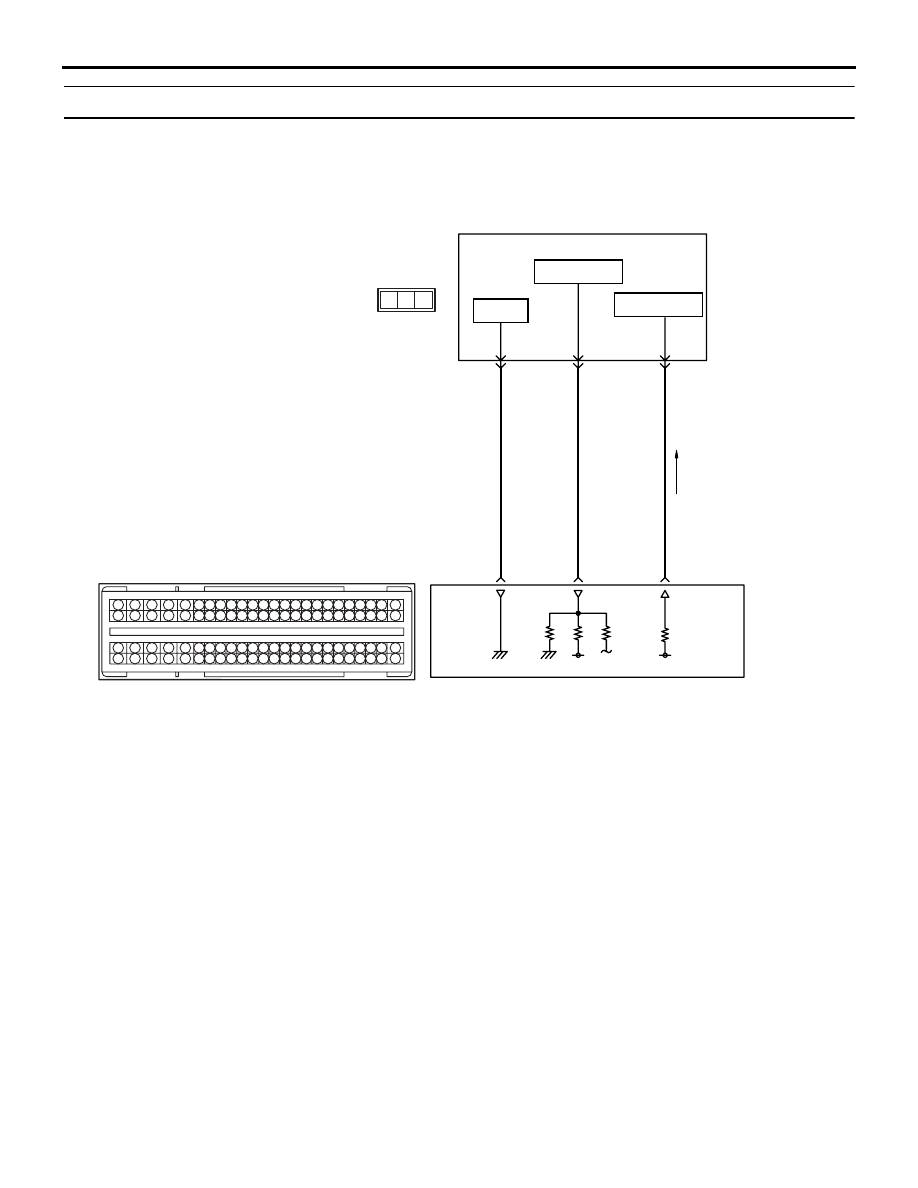Mitsubishi L200. Manual - part 155

TROUBLESHOOTING
DIESEL FUEL
13A-416
Code No. P2455: Exhaust Differential Pressure Sensor Circuit High Input <Euro5>
OPERATION
• A power voltage of 5 V is applied to the exhaust
differential pressure sensor power terminal (ter-
minal No. 3) from the engine-ECU (terminal No.
94) and earthed to the engine-ECU (terminal No.
80) from the exhaust differential pressure sensor
(terminal No. 2).
• The sensor signal is inputted to the engine-ECU
(terminal No. 56) from the exhaust differential
pressure sensor output terminal (terminal No. 1).
FUNCTION
• The exhaust differential pressure sensor outputs
the voltage to the engine-ECU in accordance with
the difference in the voltage between the DPF
upstream area and the DPF down stream area.
• The engine-ECU anticipates the amount of PM
accumulated in the DPF through this output volt-
age.
TROUBLE JUDGMENT
Check Conditions
• Battery positive voltage is 8 − 16 V
• 2 seconds later after the ignition switch has been
in "ON" position or the engine has started up
Judgment Criterion
• The exhaust differential pressure sensor output
voltage is 4.79 V or more.
PROBABLE CAUSES
• Failed exhaust differential pressure sensor
• Open circuit in exhaust differential pressure sen-
sor circuit or loose connector contact
• Failed engine-ECU
AKB00280
1
2
3
4
5 6 7 8 9
10 1112 13 14 15 16 17 18 19 20 21 22 23 24
25 26
27 28 29 30 31 32 33 34 35 36 37 38 39 40 41 42
49 50 51 52 53 54 55 56 57 58 59 60 61 62 63 64 65 66 67 68 69 70 71 72
43 44 45 46 47 48
73 74 75 76 77 78 79 80 81 82 83 84 85 86 87 88 89 90 91 92 93 94 95 96
1 2 3
AB
80
GR-B
P-G
B-O
56
94
A-148
Exhaust differential
pressure sensor
2
1
3
Exhaust Differential Pressure Sensor Circuit
C-105
5 V
Earth
Output signal
Power source
Wire colour code
B: Black LG: Light green G: Green L: Blue W: White Y: Yellow SB: Sky blue BR: Brown O: Orange GR: Grey
R: Red P: Pink V: Violet PU: Purple SI: Silver